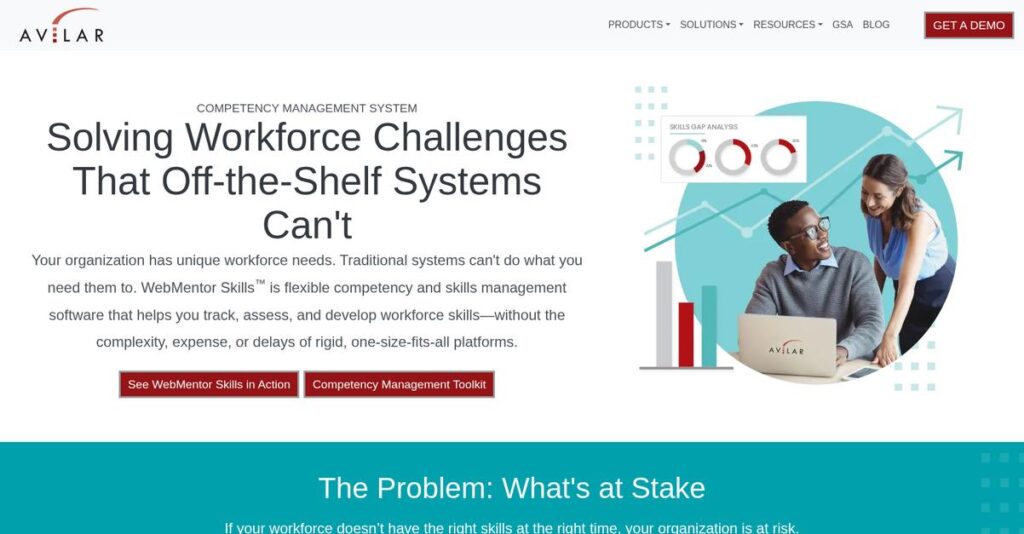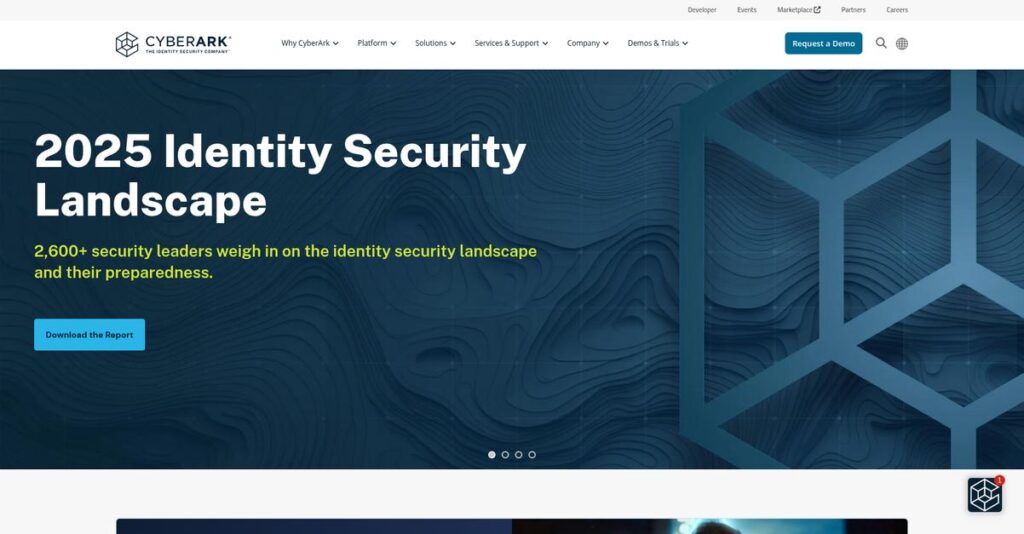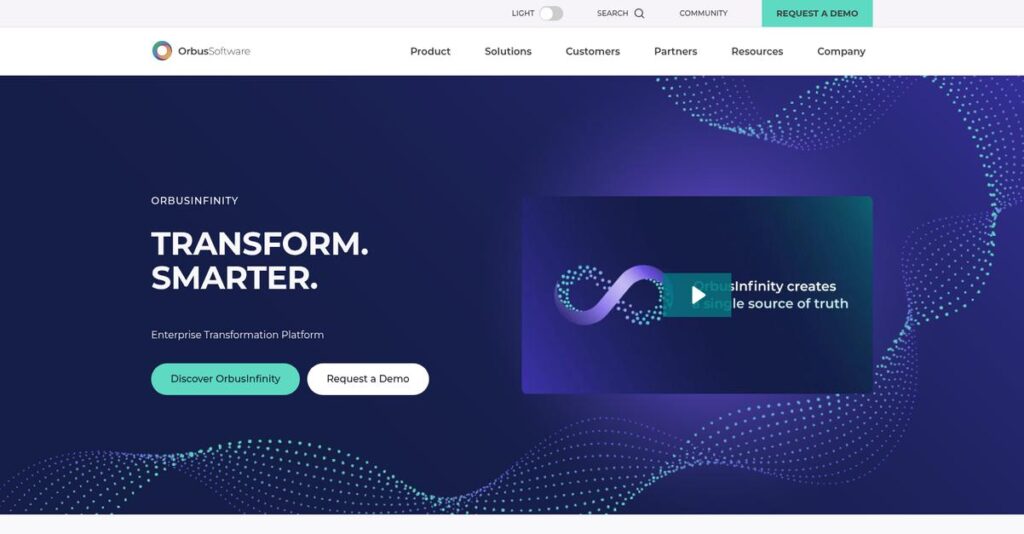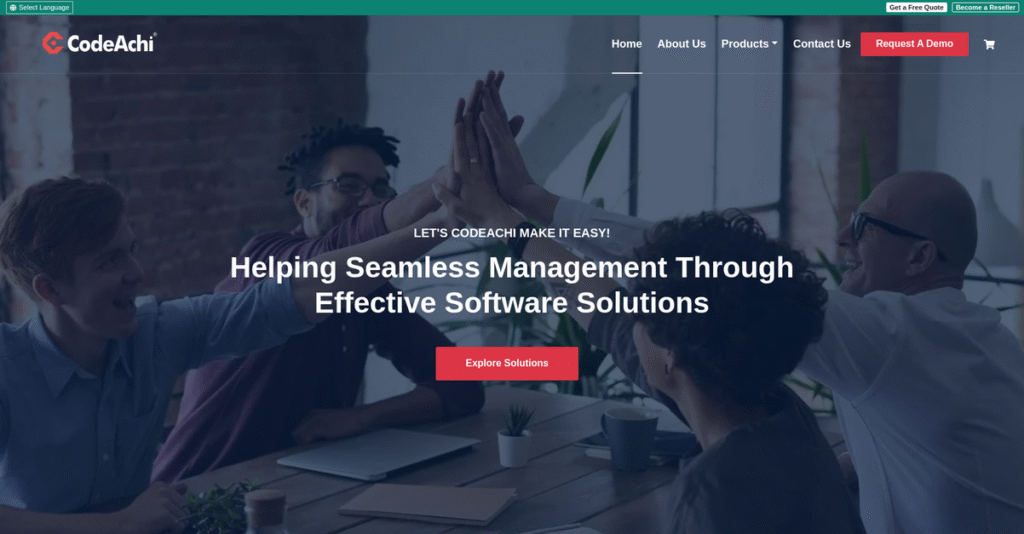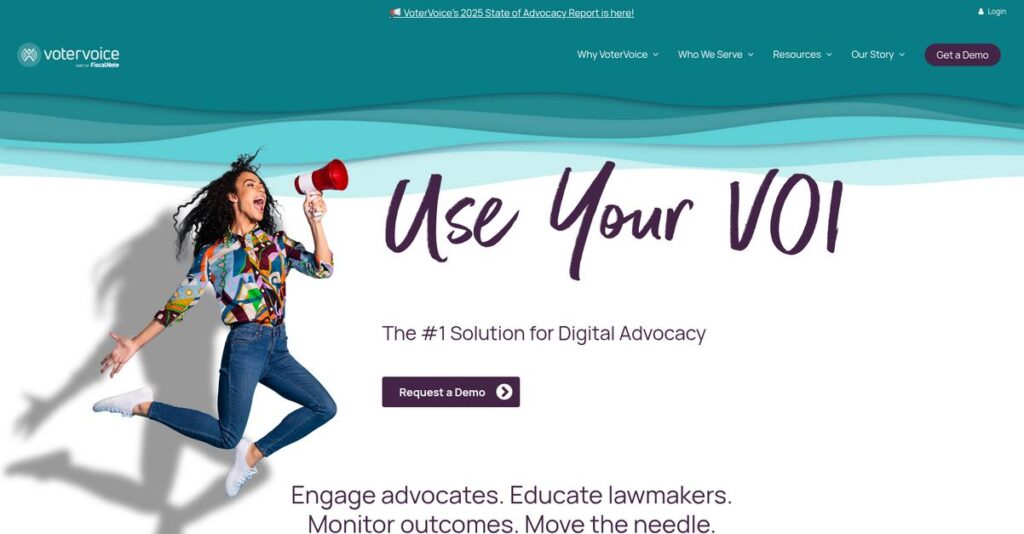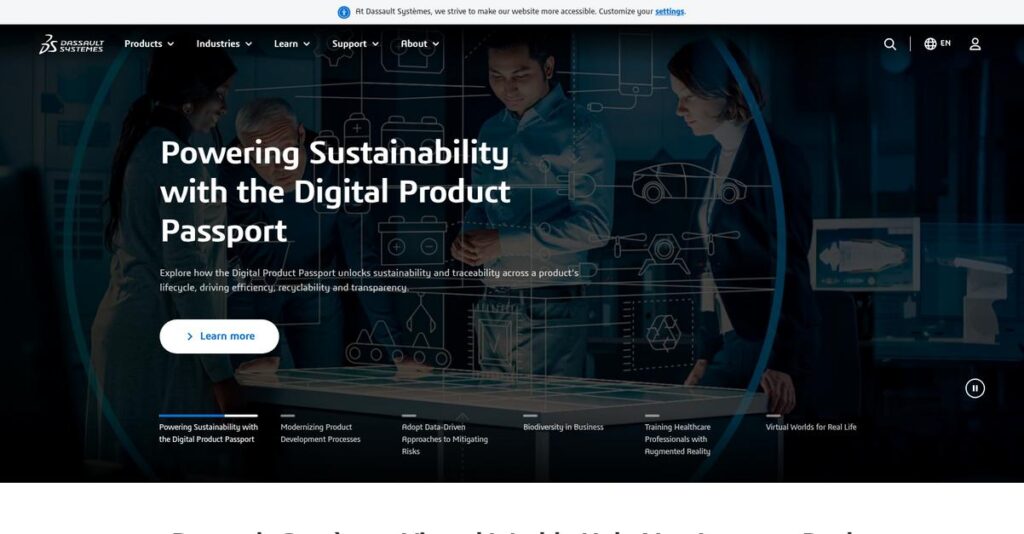Skill gaps hurting your organization’s growth?
If you’re evaluating Avilar, you’re probably struggling to clearly define job roles and measure your workforce’s real skills, not just what’s on paper.
The core problem? You’re left guessing about where critical skill gaps exist, wasting time and resources on generic training that doesn’t actually move the needle.
Avilar focuses their entire solution on competency management: from building detailed role profiles, gathering 360-degree skill assessments, to generating tailored development plans—so you finally have clarity and control over workforce development.
In this review, I’ll show you how Avilar helps you turn hidden skill gaps into actionable plans for developing your people and strengthening your team.
You’ll find a thorough Avilar review, breaking down their standout features, pricing, key benefits, and how they compare against alternative options—so you can navigate this choice with clarity.
You’ll gain a hands-on understanding of the features you need to simplify your workforce planning and development.
Let’s get started.
Quick Summary
- Avilar is a specialized competency management platform that defines job roles, assesses skills, and guides targeted employee development.
- Best for mid-market to large enterprises in regulated industries needing detailed skills tracking and compliance verification.
- You’ll appreciate its depth in competency modeling and reporting that supports precise skills gap analysis and workforce planning.
- Avilar offers subscription pricing requiring a sales consultation; no free trial is available, with setup consulting typically extra.
Avilar Overview
Avilar has been around since 1997, based in Columbia, Maryland, and focuses on competency management software. Their mission centers on helping organizations clearly define job roles, identify skill gaps, and support targeted employee development.
What sets them apart is how they specialize in highly regulated industries and compliance-driven sectors like government, defense, and healthcare. This focus means their tools are built for environments where precise skills verification and competency tracking are critical, rather than general HR management.
Recently, Avilar has refined its WebMentor Skills platform and expanded their consulting services—which I noticed when reviewing updates for this Avilar review. These moves show they’re investing in both product depth and customer guidance to improve skills-based workforce planning.
- 🎯 Bonus Resource: While we’re discussing compliance, understanding claim management software is equally important for many organizations.
Unlike broad talent suites or learning platforms, Avilar positions itself around granular competency modeling and skills gap analysis. You’ll notice their approach digs deeper into the science of skill measurement, supporting organizations that need rigorous, defensible workforce data.
They work with mid-market to enterprise organizations that require strong compliance and evidence-based talent management. Many users are in sectors where employee qualifications have a direct operational impact.
From what I see, Avilar’s strategy leans into strengthening core competency tools alongside growing consulting expertise—matching a market shift toward data-driven skills development and personalized learning plans.
Now let’s examine their capabilities.
Avilar Features
Confused about employee skill gaps and development?
Avilar solutions focus on competency management with an integrated platform designed to clarify job roles, assess skills accurately, and drive personalized growth. These are the five core Avilar solutions that address workforce challenges in talent development and performance tracking.
1. Competency Modeling & Job Role Profiling
Struggling to define clear job expectations?
Without standardized competency models, hiring and performance reviews often feel subjective and inconsistent across teams.
Avilar’s competency modeling solution lets you create detailed job profiles by defining specific skills and proficiency levels customized to your organization. From my testing, the pre-built libraries combined with customization options make setting standards practical. This solution ensures you clearly know what “good” looks like in every role.
This means your HR team gets a solid foundation to improve recruitment, evaluation, and succession planning effectively.
2. Skills & Competency Assessments
Can’t get reliable skill data on your workforce?
Traditional self-assessments often miss real skill gaps, leaving managers guessing how to allocate training resources.
Avilar enables 360-degree assessments involving peers, managers, and employees, creating an objective, multi-source view of actual skills. What I love about this feature is how the multi-rater feedback tightens accuracy beyond self-reporting. This solution highlights critical skill shortages by comparing current skills with role requirements precisely.
As a result, you can target coaching and training where it truly matters to close competency gaps.
- 🎯 Bonus Resource: While we’re discussing management tools, understanding [telecom expense management software](https://nerdisa.com/best-telecom-expense-management-software/) is equally important.
3. Personalized Learning & Development Plans
Frustrated with generic training that misses the mark?
One-size-fits-all programs waste time and budgets without addressing individual growth areas.
Avilar’s learning solution automatically builds a tailored Individual Development Plan based on assessment results, linking specific courses, on-the-job assignments, and mentoring options. Here’s the thing – this personalized approach makes training highly relevant to each employee’s needs. The platform leverages integrated LMS content but can also incorporate external resources.
This means your L&D efforts become focused and measurable, helping employees grow efficiently.
4. Career Pathing & Succession Planning
Worried top performers will leave due to unclear growth?
Employees often feel stuck when career progression paths aren’t visible or actionable.
Avilar’s career pathing solution lets employees explore roles and compare their skills to target positions, highlighting necessary development activities. From my experience, this solution encourages engagement by providing clear, visual gap analysis and actionable next steps. This empowers your workforce to take ownership of their growth.
Consequently, you build a stronger internal talent pipeline and reduce turnover risks.
5. Workforce Analytics & Skills Reporting
Leadership flying blind on skill readiness?
Without comprehensive analytics, planning for future workforce needs becomes guesswork.
Avilar offers dashboards and reports that summarize skill inventories, track development progress, and identify risks. What stands out here is how managers and executives access actionable insights through customizable visual reports. This solution transforms raw data into strategic workforce planning tools.
So, you gain foresight to make smarter hiring and upskilling decisions aligned with business goals.
Pros & Cons
- ✅ Deep competency modeling with flexible customization
- ✅ Objective multi-rater assessments enhance skill accuracy
- ✅ Strong reporting for strategic workforce insights
- ⚠️ User interface feels outdated and less intuitive
- ⚠️ Initial setup requires significant time and effort
- ⚠️ Managing ongoing assessments is administratively heavy
These Avilar solutions work tightly together as a unified competency management ecosystem that helps you understand, develop, and retain talent with clarity and precision. Next, let’s explore how pricing stacks up against competitors.
Avilar Pricing
Confused about what you’ll actually pay monthly?
Avilar pricing follows a custom quote model, which means you’ll need to contact their sales team to get pricing tailored to your specific needs. This approach reflects their focus on mid-market and enterprise customers requiring significant customization and implementation services.
Cost Breakdown
- Base Platform: Custom quote—no public pricing
- User Licenses: Per-user, per-year basis; volume affects cost
- Implementation: Separate cost; includes competency model setup
- Integrations: Varies by complexity and selected modules
- Key Factors: Number of users, modules, consulting services, support level
1. Pricing Model & Cost Factors
Avilar uses custom pricing exclusively.
Their pricing structure depends on the number of users, selected modules, and implementation complexity. What makes their pricing model stand out is how costs are tailored to your organization’s unique setup, avoiding one-size-fits-all pricing. From my cost analysis, this means your budget is influenced heavily by your specific use case, making it important to clarify all factors upfront.
This approach helps you avoid paying for unnecessary features but requires thorough planning with sales.
- 🎯 Bonus Resource: If you’re also looking into complex procurement processes, my article on Tender Management Software covers strategic selection.
2. Value Assessment & ROI
Pricing justifies tailored capabilities.
Avilar’s pricing supports its specialist competency management role, offering deep customization and consulting services. The customized pricing reflects the value of detailed competency modeling and workforce skills assessments that fit your exact needs. Budget-wise, this means you’re paying for expertise and tools that deliver measurable ROI over generic HR tools.
For your situation, this helps ensure your spend aligns with the business impact you achieve.
3. Budget Planning & Implementation
Plan for total costs carefully.
Implementation, training, and premium support often add to your initial subscription fee. From my insights, the total cost of ownership includes setup services which can equal a significant portion of the overall spend. This means your finance team needs to prepare for both ongoing licenses and up-front consulting expenses.
So for your business size, expect to work closely with Avilar to budget realistically.
My Take: Avilar pricing is designed for organizations needing tailored competency solutions with professional services. Its model fits mid-market to enterprise buyers prioritizing flexibility and accuracy in workforce development.
The overall Avilar pricing reflects customized enterprise value aligned with your needs.
Avilar Reviews
Are Avilar reviews truly reliable?
From my analysis of user feedback across specialist sites like G2 and Capterra, Avilar reviews offer valuable insights into how customers experience this niche competency management tool, balancing praise and criticism fairly.
1. Overall User Satisfaction
Users show mixed but generally positive feelings.
From my review analysis, overall ratings range from moderate to high, with many users expressing satisfaction despite noting some challenges. What stands out is how feedback consistently highlights the platform’s powerful capabilities alongside usability concerns in these reviews.
This means you can expect a potent tool that may require commitment to master fully.
2. Common Praise Points
Users consistently admire detailed skill tracking.
What stood out in customer feedback was how users consistently praise Avilar’s granularity and depth in managing competencies. The reporting and analytics engine receives frequent applaud in reviews, giving managers strategic clarity.
These features matter because they help you pinpoint skill gaps precisely and plan targeted development.
- 🎯 Bonus Resource: Before diving deeper into these reviews, you might find my analysis of local listing management software helpful for your broader business presence.
3. Frequent Complaints
Interface and complexity frustrate some users.
From the reviews I analyzed, users often complain about the outdated user interface and steep learning curve. The user interface’s dated design creates navigation challenges reported in multiple reviews.
Generally, these issues are significant but manageable if you’re prepared for an initial setup effort and training investment.
What Customers Say
- Positive: “The reporting capabilities for skills gaps are very powerful. We can see exactly where our team needs to focus.” (Capterra User Review)
- Constructive: “The user interface could use a major refresh. It feels like software from 10 years ago and can be difficult to navigate.” (G2 User Review)
- Bottom Line: “The initial setup is a heavy lift, but the Avilar team was instrumental in helping us get it right.” (Capterra User Review)
The overall Avilar reviews reflect a blend of strong functionality with usability trade-offs that you should weigh carefully.
Best Avilar Alternatives
Too many choices for competency management?
The best Avilar alternatives include several strong options, each better suited for different business sizes, budgets, and competency management priorities to help you make a practical decision.
1. TalentGuard
Looking for a broader talent management suite?
TalentGuard shines if you want more than just competency modeling—it combines performance management, succession planning, and 360 feedback into one platform. From my competitive analysis, TalentGuard offers a more integrated talent management experience that goes beyond Avilar’s focused approach, ideal if you want multiple HR functions in one place.
You should choose this alternative when your organization needs a comprehensive talent suite rather than specialized competency tools.
2. Kahuna
Need skills tracking for frontline workers?
Kahuna excels at managing skills for operational and industrial teams with a mobile-first design that works well in field environments. What I found comparing options is that Kahuna provides superior hands-on skills validation compared to Avilar’s focus on corporate roles, making it a solid alternative for workforce segments relying on mobile access.
Consider Kahuna when your priority is user-friendly mobile tools for non-desk employees.
3. SkillsBase
Want a simple, budget-friendly tool?
SkillsBase is a more lightweight and user-friendly alternative ideal for small to mid-sized businesses needing fast skill mapping without complexity. From my analysis, SkillsBase offers transparent pricing and ease of use that appeal if you don’t require Avilar’s advanced assessment or compliance features.
Choose this option if you want to avoid high costs and complicated setups while addressing basic skills management needs.
- 🎯 Bonus Resource: While we’re discussing various management systems, understanding OPD management software is equally important for clinic operations.
4. Cornerstone OnDemand
Looking for an all-in-one HR platform?
Cornerstone OnDemand serves large enterprises wanting to unify recruiting, LMS, performance, and skills inside one massive suite. Alternative-wise, Cornerstone excels in enterprise-scale HR integration though at a significantly higher cost and less depth in pure competency modeling than Avilar.
Your choice should lean here if you seek a single platform for diverse HR needs over specialized skills insights.
Quick Decision Guide
- Choose Avilar: Focused, deep competency modeling and skills analytics
- Choose TalentGuard: Need integrated talent management beyond competency models
- Choose Kahuna: Mobile-first skills tracking for frontline or industrial workforces
- Choose SkillsBase: Budget-friendly, simple skill mapping for SMBs
- Choose Cornerstone: Large enterprises requiring all-in-one HR platforms
From my viewpoint, the best Avilar alternatives depend largely on your unique business size, budget, and skills management focus to find the most fitting solution.
Setup & Implementation
Worried about managing a complex deployment?
The Avilar review shows that Avilar implementation is a strategic, resource-intensive project focused on competency framework development rather than a simple software install. Here’s what you’re looking at in terms of time, effort, and realistic expectations for rolling it out successfully in your organization.
1. Setup Complexity & Timeline
Implementation is not a quick flip of a switch.
Avilar implementation typically takes several months, primarily because your team must define detailed job roles and build out a competency library from scratch. From my implementation analysis, collaborating with Avilar’s consultants drives initial success more than any software factors. You’ll want to plan for a phased rollout, especially if migrating from spreadsheets or legacy systems.
Your organization should allocate time and key stakeholders upfront for competency model design and validation.
2. Technical Requirements & Integration
Expect moderate technical coordination efforts.
As a cloud-based solution, Avilar requires no heavy on-premise hardware, but implementation necessitates careful integration with your HRIS and LMS systems. What I found about deployment is that connecting employee data sources is often the main technical hurdle during setup. Your IT team will need to ensure secure data transfers and support integration testing.
Plan to involve your IT staff early to align data access, user provisioning, and security protocols.
3. Training & Change Management
User adoption takes thoughtful planning and patience.
The training demands for Avilar are significant; administrators and HR partners require focused sessions on system management, while managers need guidance on leveraging assessment insights. From my implementation analysis, structured training programs reduce frustration and improve adoption especially given the platform’s steep learning curve. Employees will also benefit from clear instructions on assessments and career pathing tools.
You should invest in ongoing training and appoint change champions to maintain engagement.
4. Support & Success Factors
Strong vendor support is a key advantage here.
Avilar’s support team is highly praised for their responsiveness and expertise, acting as critical partners through the complex implementation phase. What I found about deployment is that having hands-on vendor guidance significantly eases challenges and prevents project delays. Regular communication and leveraging their consulting resources enhance your chances for smooth adoption.
- 🎯 Bonus Resource: Speaking of optimizing operations, my article on best laundry management software covers specific solutions for that sector.
For success, maintain strong project leadership and foster collaboration between your team and Avilar’s experts.
Implementation Checklist
- Timeline: 4-8 months for competency framework and rollout
- Team Size: Project manager, HR, IT, and Avilar consultant involvement
- Budget: Allocate for professional services beyond licensing fees
- Technical: Integration with HRIS and LMS platforms required
- Success Factor: Dedicated competency framework development effort
From my implementation analysis, Avilar implementation demands patient and focused collaboration for implementation success, but these efforts pay off with deep competency insights for your workforce.
Who’s Avilar For
Who benefits most from Avilar?
In this Avilar review, I’ll help you figure out if this competency management software suits your business by breaking down who it serves best and where it may fall short.
1. Ideal User Profile
Best for highly regulated industries.
Avilar is tailored for mid-market to large enterprises—especially those in government, aerospace, healthcare, and energy—where managing compliance-driven competency tracking and workforce certification is mission-critical. From my user analysis, HR leaders and L&D directors in these sectors, who need precise skills data and rigorous role standards, will find this platform valuable.
You’ll have success when your organization demands detailed, defensible reporting and strategic skills gap analysis.
2. Business Size & Scale
Mid-size to large enterprise environments.
If your company employs 500 or more people and requires standardized competency frameworks across departments, Avilar fits well. What I found about target users is that large operations benefit most from deep competency modeling and data-driven workforce planning, which smaller firms may find overwhelming.
You should consider your internal resources and long-term commitment before investing, as this platform requires dedicated administration.
- 🎯 Bonus Resource: While we’re discussing software solutions, you might find my guide on best app development software helpful for other projects.
3. Use Case Scenarios
Ideal for long-term skill development and compliance tracking.
Avilar excels when your priority is enforcing required training, executing targeted upskilling programs, and systematically tracking certifications. From my user analysis, organizations focused on data-driven succession planning and competency standardization gain the most from its comprehensive skill gap identification and reporting.
You’ll want this software if your use case involves complex regulatory demands rather than simple skills matrices.
4. Who Should Look Elsewhere
Less suitable for small businesses or simple needs.
If you’re a small business or need a quick, user-friendly skill tracking tool, Avilar’s complexity and dated UI may hinder rather than help. From my user analysis, those seeking low-cost, plug-and-play solutions with minimal setup should look at alternatives.
Consider lighter tools with straightforward interfaces if you don’t have dedicated HR teams or compliance-driven processes.
Best Fit Assessment
- Perfect For: Regulated mid to large enterprises needing precise skill tracking
- Business Size: 500+ employees with dedicated HR and L&D roles
- Primary Use Case: Compliance, certification, and data-driven succession planning
- Budget Range: Investment-worthy for enterprises committed to competency management
- Skip If: Small business or need simple, low-cost skill tools
Based on this Avilar review, I believe your fit depends on regulatory complexity and team resources, not just company size or industry alone.
Bottom Line
Is Avilar the right choice for your competency management?
My Avilar review synthesizes its strengths and limitations to help you decide if it fits your organization’s skill tracking needs with confidence.
1. Overall Strengths
Exceptional competency management depth.
Avilar excels at delivering highly detailed competency tracking and gap analysis, supported by strong reporting and analytics capabilities. From my comprehensive analysis, its granular skill tracking empowers precise workforce development and differentiation from broader HCM platforms focused less on competency depth.
These strengths enable organizations, especially in compliance-heavy sectors, to make more informed training investments and workforce planning decisions.
2. Key Limitations
Complexity and dated user interface.
While powerful, Avilar’s platform presents a steep learning curve with a UI that users find clunky and less intuitive than modern SaaS tools. Based on this review, the non-intuitive interface requires substantial training and administrative effort to manage competency models effectively.
These drawbacks can be manageable if you have committed resources and technical support, but may impede adoption for users seeking plug-and-play simplicity.
- 🎯 Bonus Resource: While we’re discussing skill tracking, understanding assessment and examination software is equally important.
3. Final Recommendation
Recommended for organizations valuing depth over ease.
You should choose Avilar if you require detailed competency modeling and robust reporting, particularly in regulated industries where precise skill tracking is mission-critical. From my analysis, this software fits best with mid-market to enterprise users ready to invest in implementation and ongoing management.
Your decision should weigh the benefits of depth against the setup complexity, with a clear plan for user onboarding.
Bottom Line
- Verdict: Recommended for detailed competency management needs
- Best For: Mid-market and enterprise firms in compliance-heavy sectors
- Biggest Strength: Granular competency tracking with strong reporting
- Main Concern: Steep learning curve and outdated user interface
- Next Step: Request a demo to evaluate fit and implementation support
This Avilar review shows a platform with strong value for organizations prioritizing competency depth while highlighting areas requiring thoughtful resource commitment.
